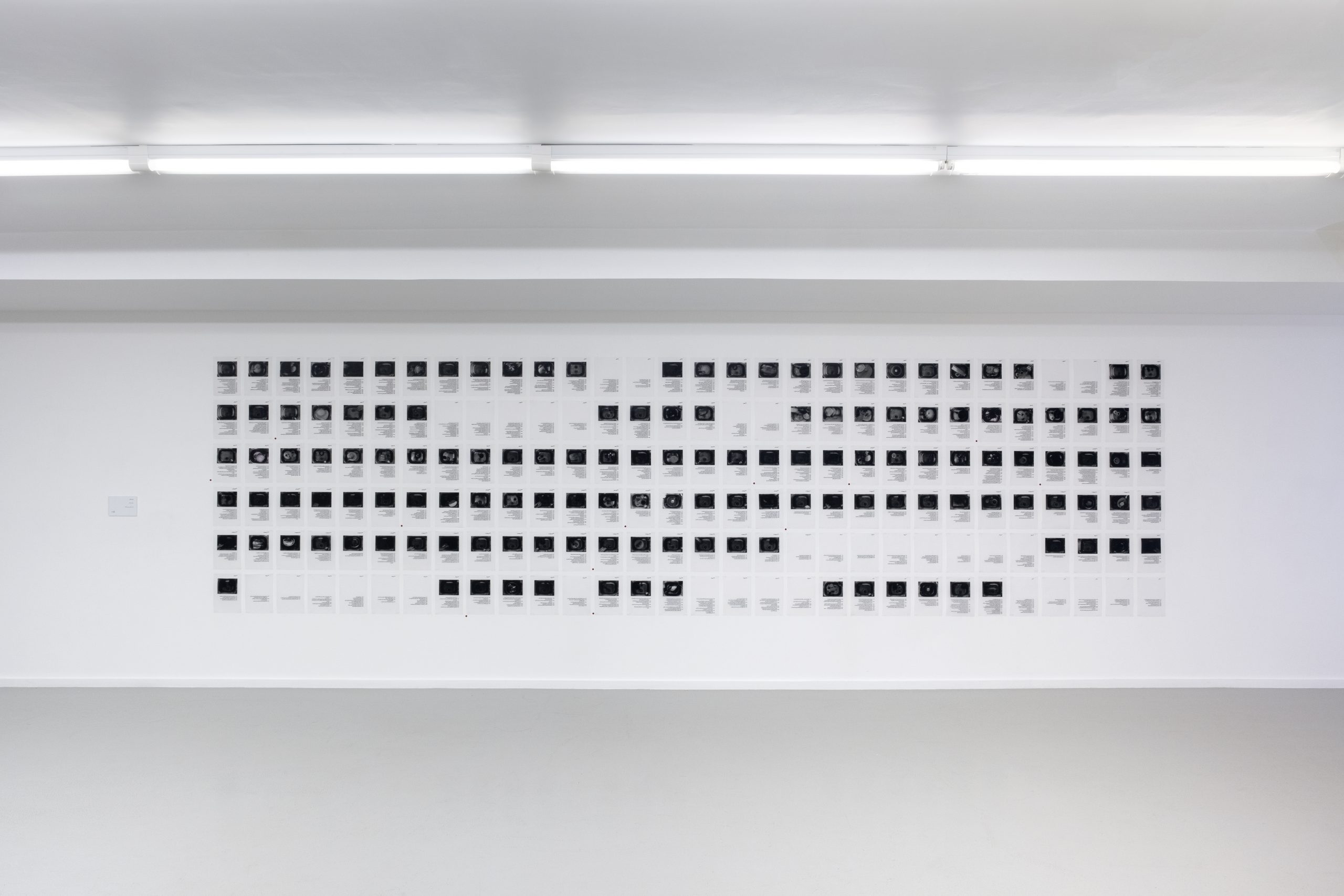It Comes Our Way
Mehrdad Ghasemkhan (DB) — Dastan’s Basement shows “It Comes Our Way”, a photography-based work by multi-media artist Dorsa Basij (b. 1990, Tehran) curated by Alborz Kazemi. “It Comes Our Way” will open
Friday, July 22 2022 and shall be on view until Friday, August 19. In her first cooperation with Dastan’s Basement, the artist relies on archival photographs and videos to study the moment of explosion only to arrive at a new understanding of annihilation.
For Dorsa Basij events following an explosion form a unified whole – when gases start to dissipate, we gradually see what remains. By recording images prior to detonation, the artist is looking at the process of destruction and annihilation in two phases: the moment of destruction and the process of annihilation. The process of annihilation doesn’t end with the destruction of the object but unfolds in stages. After the explosion, for example, when the dust has settled, its effects carry on for years to come. Images that Dorsa records of the explosion turn into pure abstractions. Scenes that the artist had recorded of “wind” on video comprise single frames of “unexpected incidents” that distort the video images momentarily, turning into a game of hide and seek in the eyes of the observer. With these images, we come face to face with a moment whose meaning we cannot decipher.
Industrial Heritage
About the Factory
Poonel Industrial Group began its operations in 1977 under the leadership of the late Davood Deyheemi, manufacturing pre-fabricated houses and employing fifty people. After fifteen years, operations were expanded and moved to the current location in Pakdasht as an integrated compound consisting of seven factories with a labor force of over 600 people, producing construction materials.
The production lines at Poonel Industrial Group along with all operations ended in 2010.
Today 17 acres of land are being converted into new spaces and venues for vi- sual arts, shared workspace and production, and agriculture.
What remains implies an aspiration so rare these days. The relics indicate a most productive people, willful and determined towards development and prog- ress. Among the industrial objects that have survived, there lie stories that the viewer can decode and review. Memory is now damaged, and what one can do is to meticulously study the remains. In this project, one
can think of the factory as an infrastructure or a dynamic material that the artist has used to create art and fresh interpretations.
Pooya Aryanpour

Boogh Afand (Wind-horn)
We doubt everything that seeks to make aware. Something that paradoxically guides us towards safety.
The “Boogh Afand” is a project in three phases, consisting of a network of pipes, part of which was already there in the
factory, formerly used for sawdust transportation. The other
part consistsof videos, displayed on monitors, installed in different parts of the production hall. A number of monitors are connected to devices that are out of order, while others belong to the control room of the hall. By manipulating the forms and adding newsections to other factory spaces, we expanded the network and attached large megaphones to them to modify the structure.
Dorsa Basij/Siavash Hatam/Parmis Hakimi Bahareh Sattarifar/Farbod Farvan
18:18”-20:24”
Residential building plan.
Mine and other motion at home.
From 14Feb to 22 Jun
self
other
Description
The relationship between human beings and their surroundings matters to me. This work refers to quarantine days and indicates the idea that our behavioral patterns are series of consistent habits which we keep repeating unknowingly.

Events and Occurrences / Photo Print on Paper / 2020 / each print 15 x 8 cm Detail
Events and Occurrences
Description
The main purpose of this work is showing the relationship between history and our lives as well as the reflection social incident on each individual.
This work illustrates 180 days of my life summarized in a kitchen sink and the message behind choosing this frame was pointing at the fact that a kitchen sink despite being a solid frame can represent the cycle of life as it gets filled , emptied daily and also shine a light on what remains at the end of the day and the impacts it has on individuals.
Events and Occurrences / Photo Print on Paper / 2020 / 120 x 310 cm Installation View
Rock, Paper, Scissors/ Video Installation / 2020 / 4:50” Looping
Negative / Video Installation / 2020 / 12:55” Looping
collaborative project
,Dorsa Basij
,Amin Abasi
,Sara Salek
Danial Barzegar
We focused on the importance of freewill and its effects on the life of human beings. Based on the above, we designed a structure consisting of five separate rooms, each demonstrating an incomplete detail of a complete narrative. The viewer will judge the narrative based on his own choice.
Collaborative project
Never Ending Action / Video / 2018 / 2:55
Never ending actions, it is about the border between vain action and efficient ones.
Our ordinary actions that we do daily, the ones that we feel obliged to repeat because we are afraid to loose their associated correspondents. My inquiry is about how far we can take it and when is the best time to leave it?